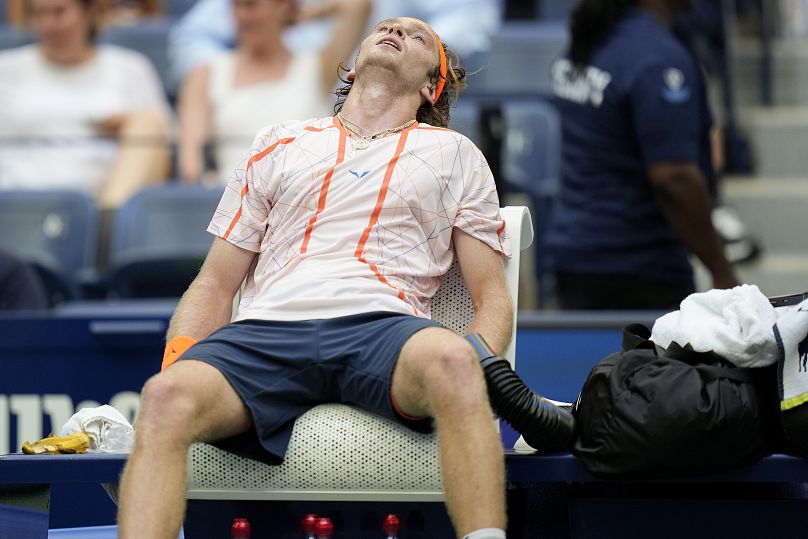Yesterday's ‘brutal’ New York game shows the increased risk to players, as new data finds that Grand Slams are getting hotter.
“One player is going to die,” Russian tennis player Daniil Medvedev warned during his US Open match yesterday in brutally hot conditions.
As New York baked in a heatwave, the former world No.1 laboured to secure his place in the championship semi-finals on Friday.
But the 35C conditions took their toll, as Medvedev struggled with his breathing and vision against his similarly sweat-drenched opponent, fellow Russian Andrey Rublev.
"One player is going to die and you are going to see," the third seed said into a camera during the match, on the hottest day of the tournament so far.
His comment came as the WMO confirmed that summer 2023 is the hottest on record, serving as a stark reminder of how much the world will suffer and lose as the climate crisis intensifies.
What are the rules for tennis players during heatwaves?
Post-match, Medvedev compared the “brutal” heat with the conditions he experienced during the Tokyo Olympics in 2021.
Those Games were a global stage for the new reality of sport under climate change. Numerous athletes passed out and faced serious health problems due to the excessive heat.
The US Open has had its own reckoning with heat in recent years. In 2018, 32C temperatures and crushing humidity caused a tennis fan to collapse in the stands while several players had to seek medical attention.
As a result, the United States Tennis Association (USTA) introduced special rules, allowing men a 10-minute break between the second and third sets, in line with the women’s tournament regulations.
With similar conditions this year, Medvedev and Rublev were able to take advantage of this reprieve and other short breaks between sets by taking cold showers, sitting under ice towels, and savouring the air conditioning units at their seats.
"At the end of the first set I couldn't see the ball any more. I played with sensations - try to go for it, try to run, try to catch the balls - and he did the same sometimes," said Medvedev, who required two medical timeouts and the use of an inhaler to make it through.
USTA introduced a new rule on Tuesday for the remainder of the event: it allowed the retractable roof over the court to be closed - a step that is usually only taken to block out rain.
Grand Slams events are getting hotter, analysis shows
New analysis from the Associated Press (AP) shows that Grand Slam tennis tournaments are feeling hotter and hotter.
AP tracked the thermal comfort index, which measures air temperature in degrees while also taking into account humidity, heat radiation, wind and other factors that affect how the body responds to the weather.
It looked at each Grand Slam event dating back to 1988, the first year all four had 128-player fields for women and men. Collectively, the maximum temperatures at those tournaments has risen by nearly 3C.
“People hear that and they don’t think it’s very much. It doesn’t necessarily register as alarming. Sometimes that 3- or 4-degree change can cause a doubling or even tripling of the number of hot days we experience,” said Daniel Bader, a climate scientist at Columbia University.
“New York City’s temperatures have been rising, and that trend is projected to continue into the future."
How long will New York’s heatwave last?
The city’s mayor issued a heat advisory on Tuesday, urging New Yorkers to take care outdoors, hydrate, and seek refuge in cooling centres - air-conditioned public facilities - if necessary.
According to the latest forecast from the National Weather Service, dangerously high temperatures and humidity are set to continue over the northeast area until this evening.
A weather front will move eastwards, bringing showers and severe thunderstorms over parts of New York State on Friday, when the men’s semi-finals are due to take place.
The heat is then set to move South, impacting Arizona and Southern California.












